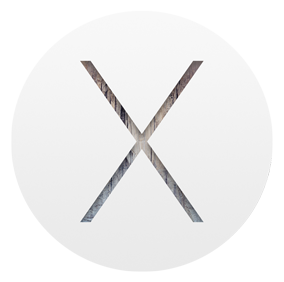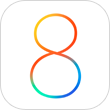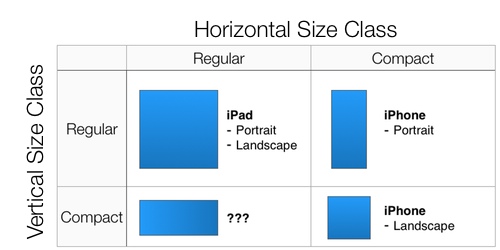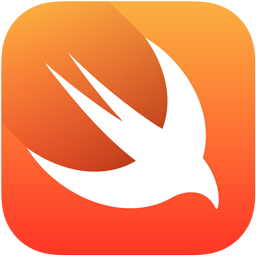WWDC 2014 took place at the beginning of June in San Francisco. It spinned out lots of announcements and introducing the next major release of iOS 8 and OS X Yosemite.
The keynote began with the adoption statistics – 89% iOS 7 adoption and 9 millions developers in total with highest 47% annual increase. I was quite surprised with such a high iOS 7 adoption rate as I thought there were be still a lot of iOS 6 style fans.
OS X 10.10 Yosemite

I won’t be spending too much time with interface changes and functionality updates as we are focusing on mobile platform, but there are several highlights I want to point out. Concept of “continuity” between iPhone, iPad and Mac. For example if you receive a call, you will be notified on your Mac and you will be given the option to answer from your Mac or iPhone. The same applies for texts and messages. “Handoff” technology which allows you to begin a task either on iOS or OS X and immediately pick it up and continue on another device
iOS 8
 From a user perspective there are not so many UI changes, but Apple has added nice features, such as interactive notifications, latest contacted people, third party keyboards etc.
From a user perspective there are not so many UI changes, but Apple has added nice features, such as interactive notifications, latest contacted people, third party keyboards etc.
From a developer perspective, iOS 8 SDK is the biggest release yet with over 4,000 new API calls. This will give us access and the option of using iOS frameworks we never had before.
iOS 8 offers new frameworks including:
- HealthKit – makes it possible for health and fitness apps to communicate with each other and use specific information to manage your health
- Metal – new graphics technology with 10-fold improvement in draw call speed. It allows developer to bring console class games into mobile devices
- Swift – new programming language
- Touch ID – provides authentication with a successful fingerprint match and keeps the fingerprint data safe
- CloudKit, PhotoKit, new Camera API, new App Store features, TestFlight, iTunes Connect with free analytics, SceneKit HomeKit, Apps Extensions and others
I am going to describe some of the features and the frameworks a little bit more, because we will use and integrate them at JUST EAT in the near future.
Size Classes
Apple introduced with iOS 6 and iPhone 5 release Auto Layout, relationship between UI elements. Now with iOS8 it announced Adaptive UI, of which main feature is the ability to specify layout rules depending on Size Classes, which are an enumeration that represent compact and regular sizes. We will be able to use same ViewController with various layout rules applied across Size Classes to adapt devices of all sizes. This is sending out a message that Apple is preparing new devices without specific resolutions or screen sizes. The other indication that something new is on the horizon is an iOS Simulator with resizable screen.

Swift
One of the biggest and most surprising announcements of the keynote was the new programming language – Swift. It is meant to be faster, safer, more modern and easier to use. Swift is also designed to be concise and interactive as the code is interpreted and rendered in the Playgrounds.
biggest and most surprising announcements of the keynote was the new programming language – Swift. It is meant to be faster, safer, more modern and easier to use. Swift is also designed to be concise and interactive as the code is interpreted and rendered in the Playgrounds.
Safe refers to the fact that the language is type safe, but thanks to type inference, the type declarations are less onerous which make Swift more concise than Objective-C. Along with type inference, Swift also introduces very concise closures (lambdas).
On the compilation and runtime side of things, Swift targets the same Cocoa (OS X) and Cocoa Touch (iOS) APIs, and uses the same LLVM as Objective-C. Swift code can co-exist with Objective-C code in the same project, encouraging adoption.
Swift is still in evolution and it will be nice to see how it will grow into a modern programming language that conforms to the mother methods of app development, and eventually replaces 30-year-old Objective-C.
On the other hand iOS and Android are now sharing C support and it will get more difficult to port the Swift app to Android now.

Analytics
iTunes Connect Analytics will provide the ways to measure engagement by being able to track installations, active devices, sessions and stickiness. Users will be able to see the source of download and retentions, but we need to remember there’s lots of information available on the other platforms for a while.
New App Store View will give you information about metrics such as how many times people viewed your app page and what is your current conversion rate. See if you are getting lots of traffic, but no downloads.
I don’t think Apple’s analytics will displace other analytics solutions like Google Analytics, but it will provide more insight into what is actually happening on the App Store.
Debugging
 Apple gave to the developers another update for Xcode. Maybe you had a situation where you had to quickly test some piece of code and you ended up creating lots of “test projects”. I have probably seven of them and the new Xcode 6 actually gives you a solution for it. It’s called Playgrounds where you can try out your code without creating a new project. With interactive sidebar you can instantly see output of your code there. It displays variables in a graph, inspects each step of your drawing and watches SpriteKit or SceneKit animations.
Apple gave to the developers another update for Xcode. Maybe you had a situation where you had to quickly test some piece of code and you ended up creating lots of “test projects”. I have probably seven of them and the new Xcode 6 actually gives you a solution for it. It’s called Playgrounds where you can try out your code without creating a new project. With interactive sidebar you can instantly see output of your code there. It displays variables in a graph, inspects each step of your drawing and watches SpriteKit or SceneKit animations.
Xcode 6 includes UI inspector – live debugging tool to resolve difficult UI bugs, as can be seen on the picture.
Apple is following the example set by third party tools such as Reveal and Spark Inspector.
The fact that Apple included the feature in the Xcode 6 gives us the comfort of getting it for free with no need to buy any additional tools.
Conclusion
Apple shows again that it can still surprise everyone beyond all expectations by releasing new programming language Swift and a huge iOS SDK update. On the other hand we have seen some of those ideas before in other third party tools, and we can probably expect this to continue.
WWDC Announcements will affect not only design but also the architecture of our iOS applications. Our UX/UI is creating new layout to support the “Adaptive UI” and we are supporting them from a technical perspective to get it ready by September, when the release of the iOS 8 and probably the new device is expected.
WWDC was for me a great experience where I could present our company, speak to Apple’s engineers, and meet other developers and friends. I believe this opportunity will help everyone in our iOS team to improve and I hope all of us will have a chance to attend the great conference in San Francisco.
Apple has such complete control over both the hardware and software ends of the market, which allows its devices to work so well together. Nowhere has this been more apparent than in the product integration we could have seen on the WWDC stages for the whole week. That’s why I believe all the announcements will allow Apple overtake the competition with regards to the innovations, because they are so significant.
Pavol Polak